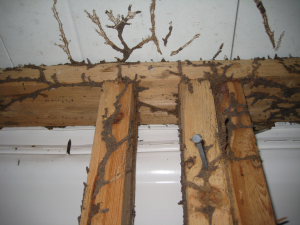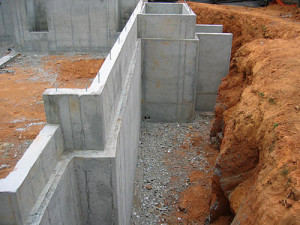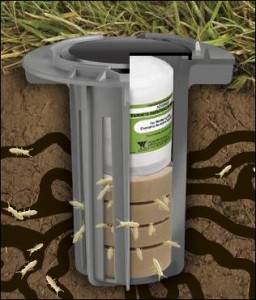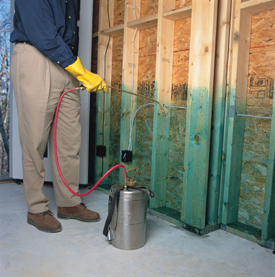Termite inspection and Control
 Most homeowners are aware of the destructive nature of termites. If your home has an active termite infestation, it is extremely important that whatever treatment method you employ to deal with it is the most effective method for your specific situation. Some pest professionals hold the position that certain treatment methods are the best for termites in all cases. However, the truth is that, depending on the situation, certain specific methods or a combination of more than one are the best approach for eliminating termites and keeping them out of your home permanently. There are three major approaches to termite treatment. These three methods are liquid treatment, bait treatment, and borate treatment.
Most homeowners are aware of the destructive nature of termites. If your home has an active termite infestation, it is extremely important that whatever treatment method you employ to deal with it is the most effective method for your specific situation. Some pest professionals hold the position that certain treatment methods are the best for termites in all cases. However, the truth is that, depending on the situation, certain specific methods or a combination of more than one are the best approach for eliminating termites and keeping them out of your home permanently. There are three major approaches to termite treatment. These three methods are liquid treatment, bait treatment, and borate treatment.
Liquid Treatment:
Liquid treatment is the oldest and most used treatment method in the pest industry. It can be used both as a preventative measure as well as a treatment option for  active infestation. The goal of liquid application is to establish a barrier around the perimeter of a home using a liquid treatment product that is sprayed into the soil.
active infestation. The goal of liquid application is to establish a barrier around the perimeter of a home using a liquid treatment product that is sprayed into the soil.
Most liquid treatment products used to contain a repellant compound, and termites would naturally avoid it. However, this had a shortcoming if the treatment barrier had any gaps, as termites could locate these gaps and exploit them to gain access to the home. For this reason, many new liquid products are non-repellant, and termites will unknowingly be exposed to them while moving through the soil. The treatment covers termites that move through it, and can be passed on to other termites when they return to the nest. After a period of time, the termites will succumb to the product and die, along with any other termites in the colony that the treatment was spread to.
At one time, liquid treatment was by far the most popular method of treatment, and it still remains the favored treatment method of some older pest control companies. Liquid treatment is especially useful around homes with clearly defined perimeters. However, it is less effective for treating homes with areas that the technician cannot directly access.
Bait System Treatment:
Bait treatment systems are a newer treatment option that has gained popularity in recent years. Bait systems are essentially a series of termite “feeding boxes” placed  around the perimeter of the home. Initially, these boxes are filled with some sort of cellulosic(wood based) material such as paper or cardboard that acts as a tempting food source for any nearby termites. If an inspection of the bait system reveals signs of feeding, the nutrient source will then be replaced by a bait product that contains a slow acting product that is fatal to any termites that consume it.
around the perimeter of the home. Initially, these boxes are filled with some sort of cellulosic(wood based) material such as paper or cardboard that acts as a tempting food source for any nearby termites. If an inspection of the bait system reveals signs of feeding, the nutrient source will then be replaced by a bait product that contains a slow acting product that is fatal to any termites that consume it.
Once the new bait is in place, termite workers will return and feed on the bait. They will carry the chemical compound with them and spread it to other termites in the nest, and shortly after any exposed termites will succumb to the product and die.
Bait systems are generally slightly more expensive than liquid treatment. However, this expense is often worthwhile for homes that are difficult to treat with liquid products. Bait systems also serve as an early warning sign of any termite activity, which can be critical in preventing future termite infestations.
Borate Treatment
Borate treatment products are a very recent innovation in termite control. The treatment process involves spraying a compound made of a combination of glycol and borate onto any wooden framing used in the home. The glycol will evaporate and allow the borate to penetrate the wood to the center. Once this is complete, the wood completely repels termites and any other wood destroying organisms.
Because this process requires access to the framework of the home, it is generally only possible to apply this treatment during the initial construction of the house or during renovations. However, it has been steadily gaining popularity among builders due to its long lasting protection. It is important to point out, however, that borate treatment cannot be applied to other cellulosic materials such as wallpaper or wooden furniture, and therefore those materials are still at risk from termites.
What treatment is best for my home?
It can be difficult for homeowners to determine exactly which treatment option is best for their specific situation. Oftentimes, the best solution to termites is some combination of different treatment options. If you are dealing with an active termite infestation, or wanting to ensure that your home stays termite free into the future, it is critical to call in a professional pest service that you can trust to give you the best guidance for how to treat your home.
Here at Canton Termite and Pest Control, we have decades of experience treating for termites. Our technicians can thoroughly inspect your home, identify any signs of pest activity, and provide you with the best possible treatment plan for your specific situation, all at a price that fits your budget!
So if you want to keep your home termite free, or simply have a question, call us today at 770-479-1598!
By: Tim
Here’s to YOU living pest free!
